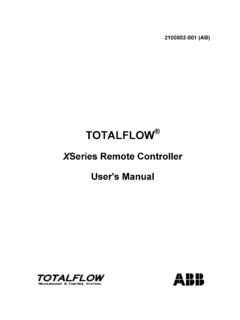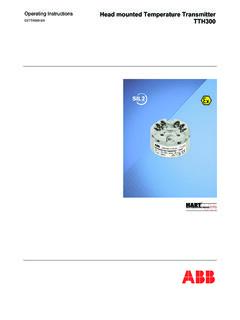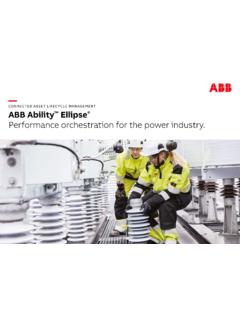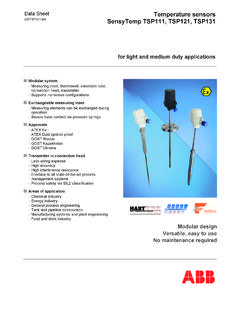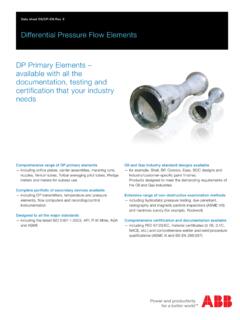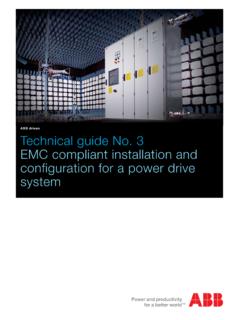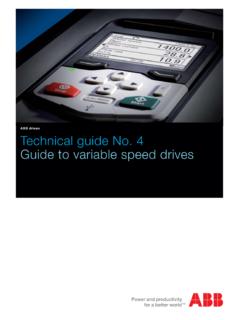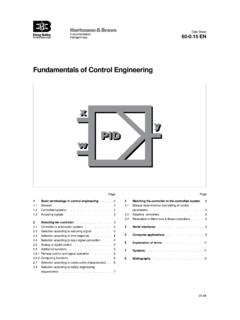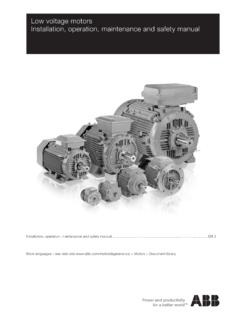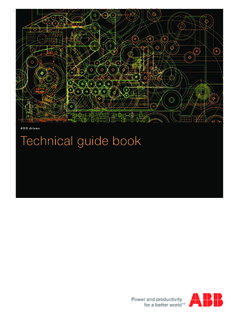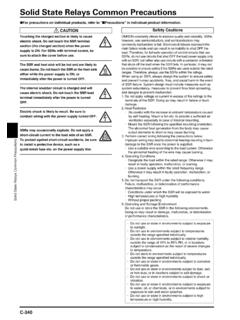Transcription of Relay symbols and device numbers; selection from IEC 617 ...
1 Page 1 symbols and designationsSymbols and designations, based on the IEC 617- series ,IEC 617-7 (1983) and othersBlock symbols and qualifying symbols1. General block symbolsProtection relayThe asterisk must bereplaced by one or moreletters or qualifyingsymbols indicating theparameters of the deviceProtection Relay withenabling inputProtection Relay withblocking input2. Parameters and functionsICurrentI Reverse currentIdDifferential currentId/IPercentage differential current (current restraint)InfCurrent of nth harmonicI1, (Ip)Positive sequence current componentI2, (In)Negative sequence current componentI0, (Ih)
2 Zero sequence current componentIrsdResidual currentI Earth fault currentI Current to frameINCurrent in the neutral conductorIN-NCurrent between neutrals of two polyphase systemsIubCurrent unbalanceUVoltagedP/dtPower derivativeQReactive powerRResistanceXReactanceZImpedancefFre quencynRotational speedFMagnetic fluxjPhase angleQTemperatureThermal effectFlash-over, FaultDelayDelay at transition to ON-state, pick-up delaytRelay symbols and device numbers; selection from IEC 617-, IEEE and IEEE 590 006-BENI ssued June 1999 Changed since July 1998 Data subject to change without noticeRelay symbols and device numbers.
3 selection from IEC 617-, IEEE and IEEE 590 006-BENPage 2 symbols and designations (cont d)SYNCS ynchronizing (check)BLOCKB locking deviceLOLock-outTCSTrip circuit supervisionX/YTranslation of signalA/D or /#Analog to digital conversion>Operation above a set value, overcurrent<Operation below a set value, underimpedance>>Operation above a high set stageExamples of protection relaysRelays and Relay partsAuxiliary Relay with mechanical contactsAuxiliary Relay , block symbolStatic Relay with terminals for external auxiliary voltage supplyURelay with make contact, delayed when the Relay is delayRelay with brake contact.
4 Delayed when the Relay is delayOvercurrent Relay with short-circuiting connectorCoilsRelay with one windingRelay with two windingsOperate and reset coilRelay contactsMake contactBrake contactChange-over contact(break before make)Change-over contact,delayed when releasingChange-over contact,delayed when operatingSwitch contactsPush-button operated contact with automatic returnRRelay symbols and device numbers; selection from IEC 617-, IEEE and IEEE 590 006-BENPage 3 Test switch (voltage supply circuit), late opening and early closing upon insertion and withdrawal, respectively, of the test han-dle.
5 Note that the test switch contacts number 1 and 18 (12) will not be opened when the test handle RTXH 18 (24) is (trip circuits), early opening and late closing upon insertion and with-drawal respectively, of the test before break contacts with shorting connection (CT secondary circuits), late opening and early closing upon insertion and withdrawal respectively, of the test with self reset, indi-cates when coil is energized. Annunciator element (target)Indicator light, lamp or ledHand reset indication, indicates when the coil is energized and remains visible even when the coil is not energizedComponentsCapacitor, general symbolPolarized capacitorResistor, general symbolPotentiometerResistor with two fixed end terminals and one movable terminalVaris torVoltage dependent non-linear resistorFixed trimming resistorResistor with two fixed end terminals and one movable terminal for fixed setting (trimming)
6 Diode, semiconductorReference diode Zener diode Voltage regulator diodeSingle-phase transformer with two windingsRelay symbols and device numbers; selection from IEC 617-, IEEE and IEEE 590 006-BENPage 4 symbols anddesignations (cont d)DesignationsIr, UrRated current, voltageIb, UbBase current, voltageIs, UsSet current, voltageL1, L2, L3, NPhase designationsAlternating current, acDirect current, dcAc and dcULAuxiliary tripping voltageELAuxiliary electronic voltageRLAuxiliary Relay voltageLogic elementsLogic setting signal(including on-off)Binary input signalAND gate C = A x BOR gate C = A + BInput invertedOutput invertedSignal summation circuit C = A + (-B)DIRBCD ivider (by 5)
7 Band-pass filterTime element delayed on pick-up, 200 msTime element delayed on drop-out, 70 msAdjustable time element delayed on pick-upTime element non re-triggable pulseLoop delay output(T) = input (T-1)Light emitting diode (LED)Earth fault over-current dependent time functionDirectional earth fault overcurrent functionLevel detector, earth fault voltage checkLOOPDELAYEF UCHR elay symbols and device numbers; selection from IEC 617-, IEEE and IEEE 590 006-BENPage 5 IEEE device numbers and functionsIEEE device numbers and func-tions for switchgear apparatusThe devices in switching equipments are referred to by numbers, with appropriate suf-fix letters when necessary, according to the functions they numbers are based on a system adopted as standard for automatic switchgear by IEEE, and incorporated in American Standard This system is used in connection diagrams, in instruction books, and in function1 Master element is the initiating device , such as a control switch, voltage Relay , float switch etc.
8 , that serves either directly, or through such permissive devices as protective and time-delay relays, to place an equip-ment in or out of starting or closing Relay is a device that functions to give a desired amount of time delay before or after any point of operation in a switch-ing sequence or protective Relay sys-tem, except as specifically provided by device functions 48, 62 and 79 described later. 3 Checking or interlocking Relay is a device that operates in response to the position of a number of other devices, (or to a number of predeter-mined conditions), in an equipment to allow an operating sequence to pro-ceed, to stop, or to provide a check of the position of these devices or of these conditions for any purpose.
9 4 Master contactor is a device , generally controlled by device No. 1 or equivalent, and the required permis-sive and protective devices, that serve to make and break the necessary con-trol circuits to place an equipment into operation under the desired conditions and to take it out of operation under other or abnormal device is a control device used primarily to shut down an equip-ment and hold it out of operation. [This device may be manually or electrically actuated, but excludes the function of electrical lockout (see device function 86) on abnormal conditions.] 6 Starting circuit breaker is a device whose principal function is to connect a machine to its source of starting voltage.
10 7 Rate-of-rise Relay is a Relay that func-tions on an excessive rate of rise of current. 8 Control power disconnecting device is a disconnecting device , such as a knife switch, circuit breaker, or pull-out fuse block, used for the purpose of respectively connecting and disconnecting the source of control power to and from the control bus or device is used for the purpose of reversing a machine field or for performing any other reversing sequence switch is used to change the sequence in which units may be placed in and out of service in multiple-unit device is a device that performs three or more comparatively important functions that could only be designated by combining several of these device function numbers.
